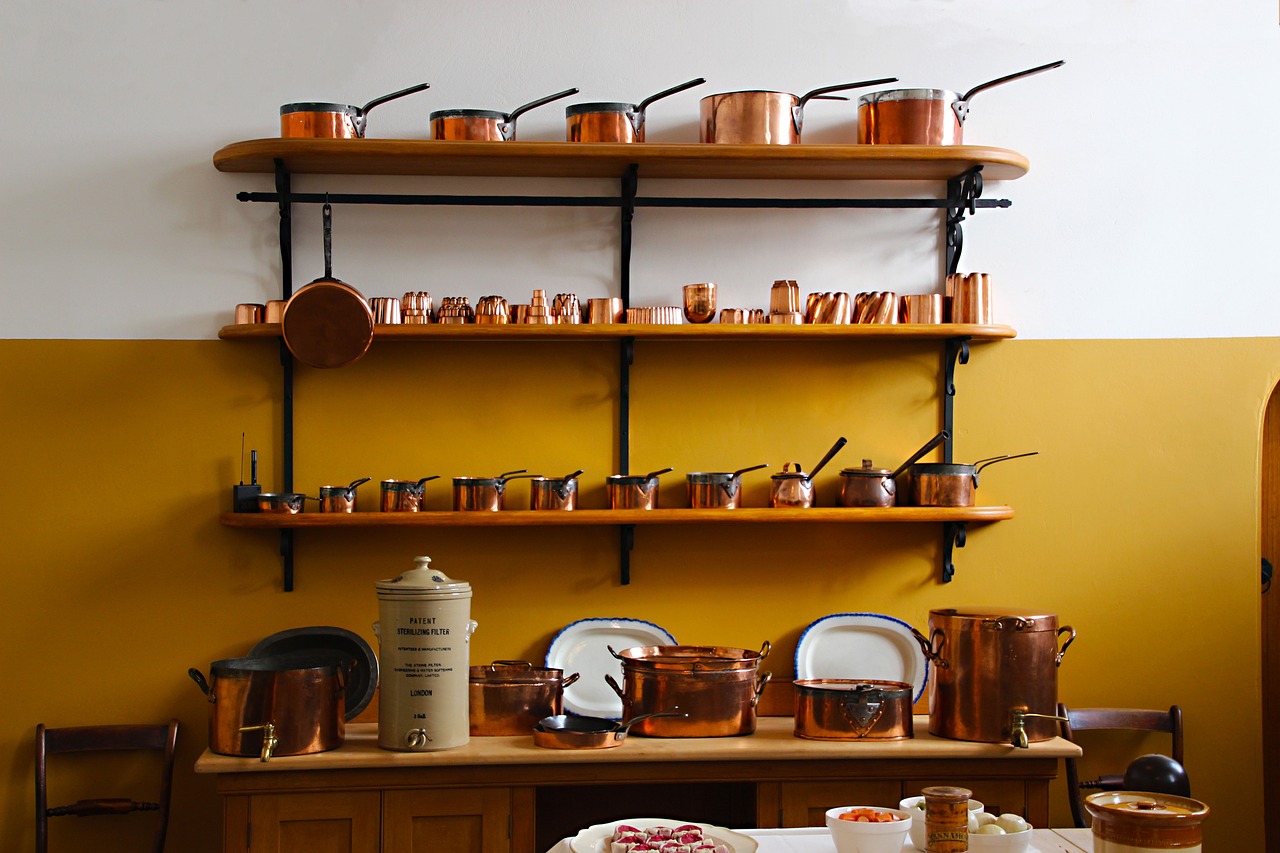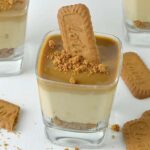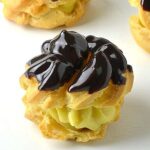
Cooking is an art form that blends science and creativity in perfect harmony. Behind every delectable dish lies a symphony of chemical reactions, physical transformations, and culinary techniques. As chefs strive to achieve culinary excellence, they often use their arsenal of tools, each carefully selected to optimize the cooking process.
Among these tools, copper-clad cookware stands out as a staple in professional kitchens and a prized possession in home kitchens worldwide. In fact, OEC World shows that the US imported $27 million worth of table and kitchen articles of copper in 2022.
Renowned for its exceptional heat conductivity and unrivaled responsiveness, copper-clad cookware represents the pinnacle of culinary craftsmanship. But what makes copper-clad cookware so special? To unravel the mysteries behind its superior performance, we delve into the fascinating science of culinary alchemy.
The Chemistry of Copper-Clad Cookware
At the heart of copper-clad cookware lies elemental copper, renowned for its remarkable properties that make it indispensable in the kitchen. As de Buyer states, copper boasts unparalleled thermal conductivity. This means copper distributes heat quickly and evenly across its surface, ensuring precise temperature control and minimizing hot spots.
However, while copper’s thermal conductivity is exceptional, its reactivity with certain foods poses a challenge. Acidic ingredients like tomatoes and citrus fruits can react with bare copper, leading to off-flavors and discoloration.
To overcome this limitation, copper-clad cookware features a layer of inert metal, typically stainless steel, on its cooking surface. This copper core, encased within a protective layer of stainless steel, combines the best of both worlds. It has copper’s superior heat conductivity and stainless steel’s non-reactive properties.
The Science of Heat Conduction
Effective heat conduction lies at the core of successful cooking. It influences everything from the Maillard reaction that gives meat its savory flavor to the delicate caramelization of sugars in desserts.
Heat transfer can be inconsistent in traditional cookware, such as aluminum or stainless steel, leading to uneven cooking and unpredictable results. Copper-clad cookware, however, excels in this regard thanks to copper’s exceptional thermal conductivity.
When heat is applied to the base of a copper-clad pan, the copper rapidly absorbs and distributes the energy throughout its structure. This rapid heat transmission ensures that the cooking surface reaches the desired temperature quickly and uniformly. As a result, ingredients cook evenly, with precise control over the cooking process.
You can consider the example of de Buyer copper cookware. The de Buyer cookware collection has a wide range of copper pans with even heat distribution. This makes them a must-have for delicate culinary preparations, especially in French-style cooking. Whether searing a steak to perfection or simmering a delicate sauce, copper-clad cookware provides the responsive heat distribution needed for flawless culinary execution.
According to Southern Living, the internal temperature requirement for a rare steak is 125°F-130°F, and it should be cooked for 8 minutes. Cooking constantly for 8 minutes at such a high temperature also impacts the utensil, but copper-clad cookware can easily absorb it.
The Role of Thickness in Thermal Performance
While copper’s thermal conductivity is undisputed, the thickness of the copper layer in copper-clad cookware plays a critical role in its performance. Several scientific studies have proved the relationship between thickness and thermal performance.
For instance, an MDPI study shows how reducing fin thickness helped increase the total heat transfer rate. Moreover, it also improved the overall efficiency of the bus duct conductor.
But with copper-clad cookware, even thick layers can help with better efficiency. Thicker copper layers have a greater capacity to absorb and distribute heat, offering enhanced temperature stability and responsiveness.
Professional-grade copper-clad cookware often features thicker copper layers, providing chefs unparalleled control over the cooking process. Additionally, the thickness of the stainless steel layer encapsulating the copper core influences the cookware’s durability and resistance to warping.
A thicker stainless steel layer provides added strength and structural integrity, ensuring the cookware maintains its shape and performance over time. Manufacturers create copper-clad cookware that combines optimal thermal conductivity with long-lasting durability by carefully balancing the thickness.
The Art of Temperature Control
Temperature control is a fundamental aspect of cooking, influencing the final dish’s texture, flavor, and appearance. That is why, according to one survey, 88.1% of restaurants use a thermometer to check the temperature of their refrigerators and freezers.
Thanks to copper’s exceptional responsiveness, chefs can exercise precise control over cooking temperatures with copper-clad cookware. Whether adjusting the heat for a delicate reduction or searing ingredients at high temperatures, copper-clad cookware delivers the precise temperature control needed.
Furthermore, copper’s responsiveness to changes in temperature allows chefs to adapt quickly to the evolving needs of their dishes. When ingredients are added to a preheated copper-clad pan, the copper rapidly transfers heat to maintain the desired temperature, ensuring consistent results. This responsiveness minimizes fluctuations in temperature, preventing overcooking or undercooking and preserving the integrity of the ingredients.
The Importance of Maintenance and Care
While copper-clad cookware offers unparalleled performance in the kitchen, proper maintenance and care are essential to preserve its beauty and functionality. Over time, copper may develop a natural patina, adding character to the cookware’s appearance. However, improperly maintained, copper-clad cookware can tarnish and lose its luster.
To maintain copper-clad cookware, it is essential to regularly clean and polish the copper surfaces to remove tarnish and restore shine. Mild dish soap and warm water can clean the cookware, followed by a thorough drying with a soft cloth. Additionally, specialized copper cleaners can remove stubborn stains and restore the cookware’s original brilliance.
Frequently Asked Questions
Is Copper Cookware 100% Copper?
Copper-clad cookware typically consists of a copper exterior bonded to another metal, such as stainless steel or aluminum. This construction combines copper’s excellent heat conductivity with the inner metal’s durability and compatibility. Pure copper cookware is rare due to its high cost and reactivity with certain foods, making clad versions more common and practical.
Is Cooking in Copper Healthy?
While copper is an excellent conductor of heat and is prized for its culinary benefits, pure copper cookware is not recommended. This is because copper can react with acidic foods, leading to the leaching of copper into the food, which can be harmful in excessive amounts. However, copper-clad cookware, where copper is only on the exterior, provides the benefits of copper without the risk of overexposure.
Do Professional Chefs Use Copper Pans?
Professional chefs often appreciate the superior heat conductivity of copper cookware, which allows for precise temperature control and even cooking. However, pure copper pans’ high cost and maintenance requirements can be prohibitive for some establishments. Many chefs opt for copper-clad cookware instead, enjoying the benefits of copper without the drawbacks, making it a popular choice in professional kitchens.
In conclusion, copper-clad cookware combines the superior heat conductivity of copper with the durability and non-reactive properties of stainless steel. By harnessing the science of heat conduction and temperature control, copper-clad cookware empowers chefs to unleash their creativity in the kitchen. This helps achieve unparalleled culinary excellence. As we continue exploring the intersection of science and cooking, copper-clad cookware is a shining example of culinary alchemy.




Leave a Reply